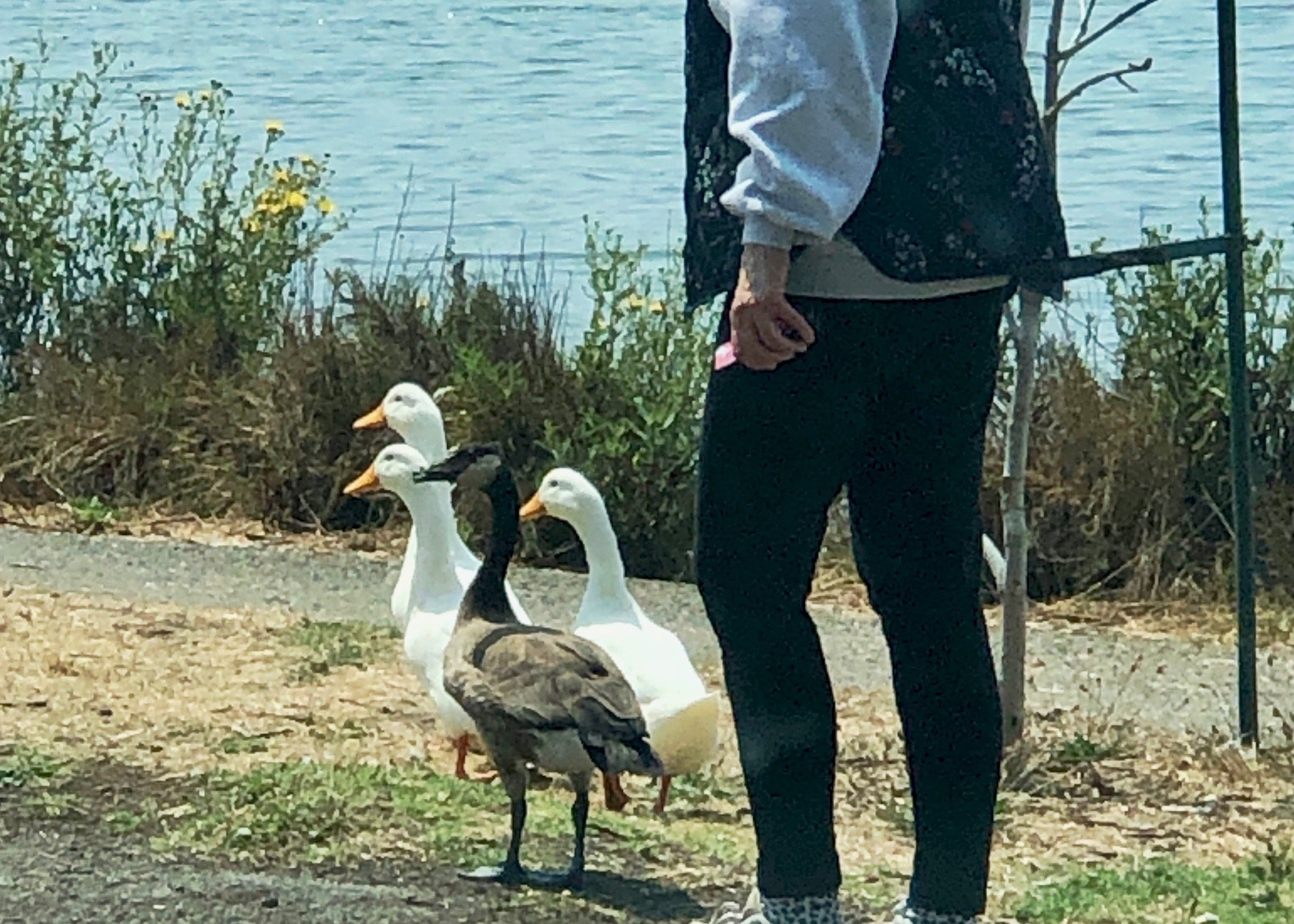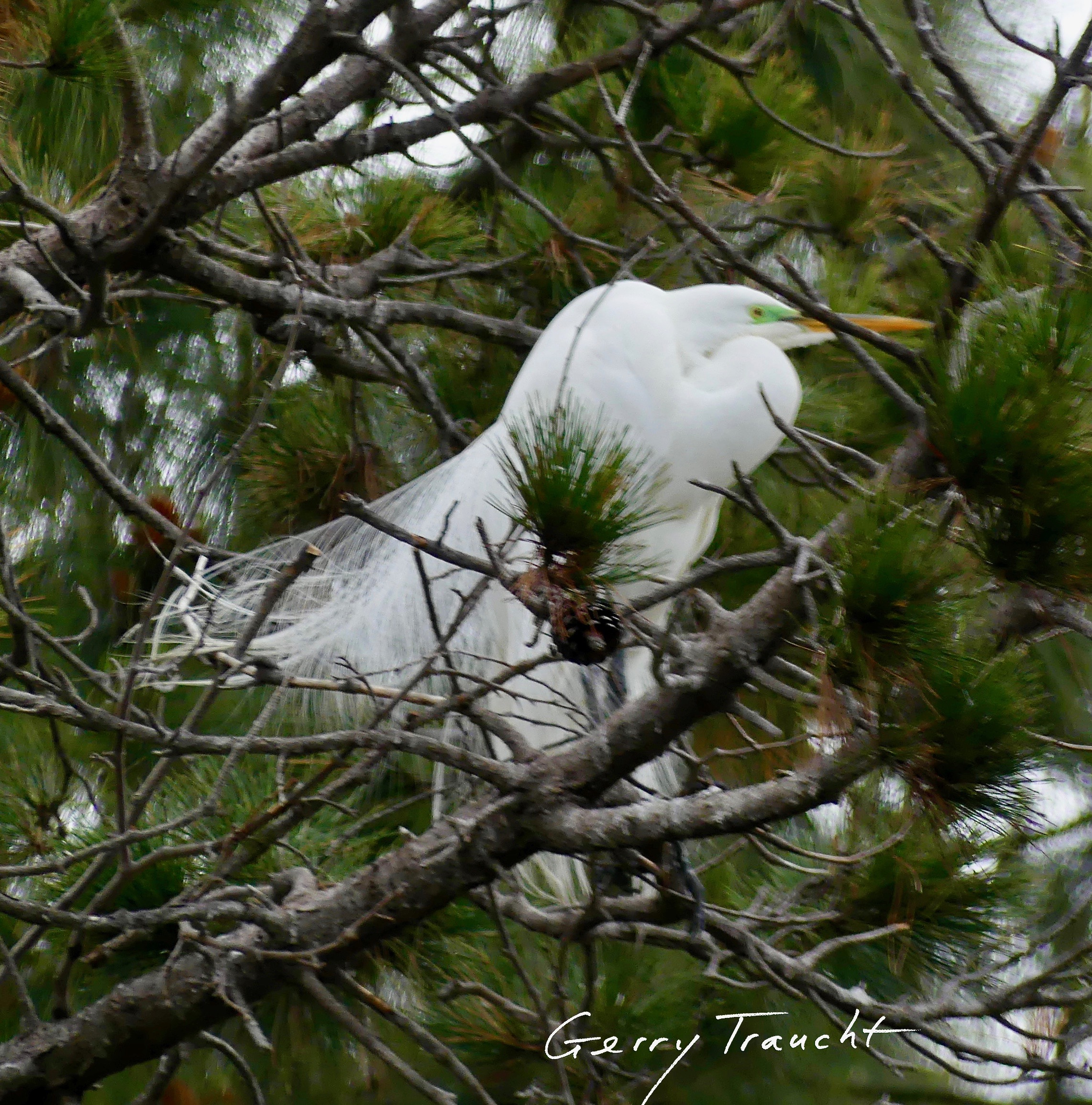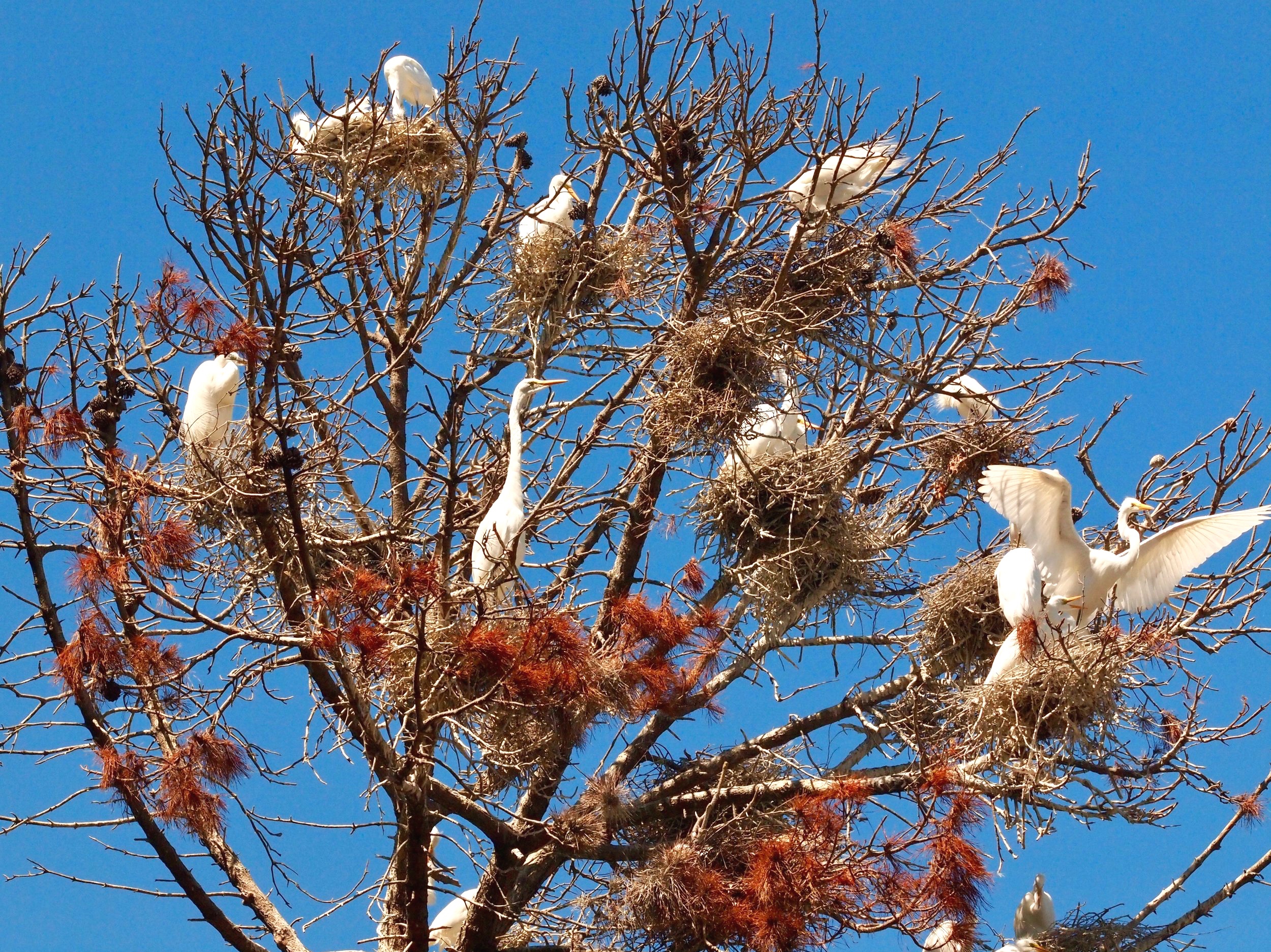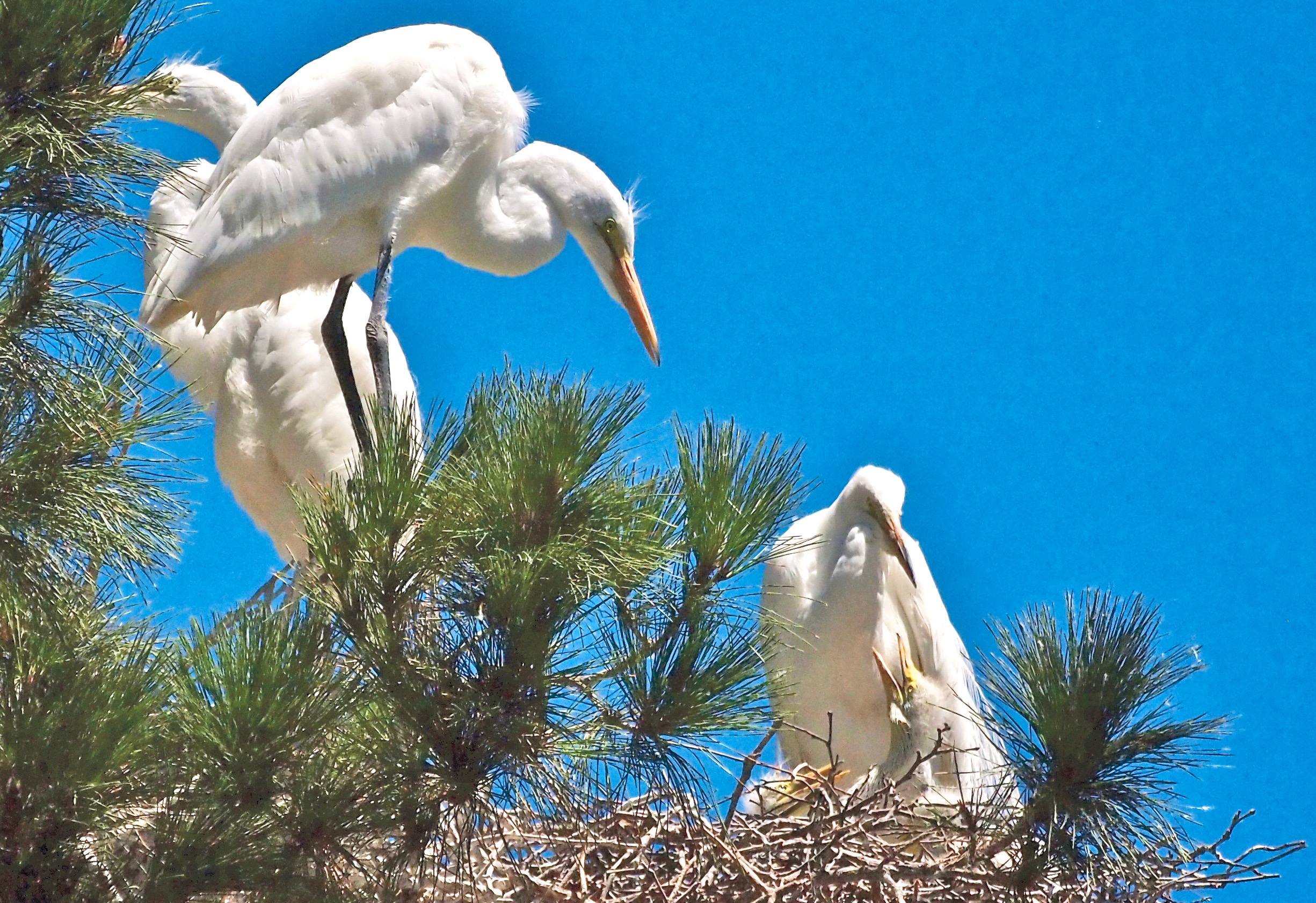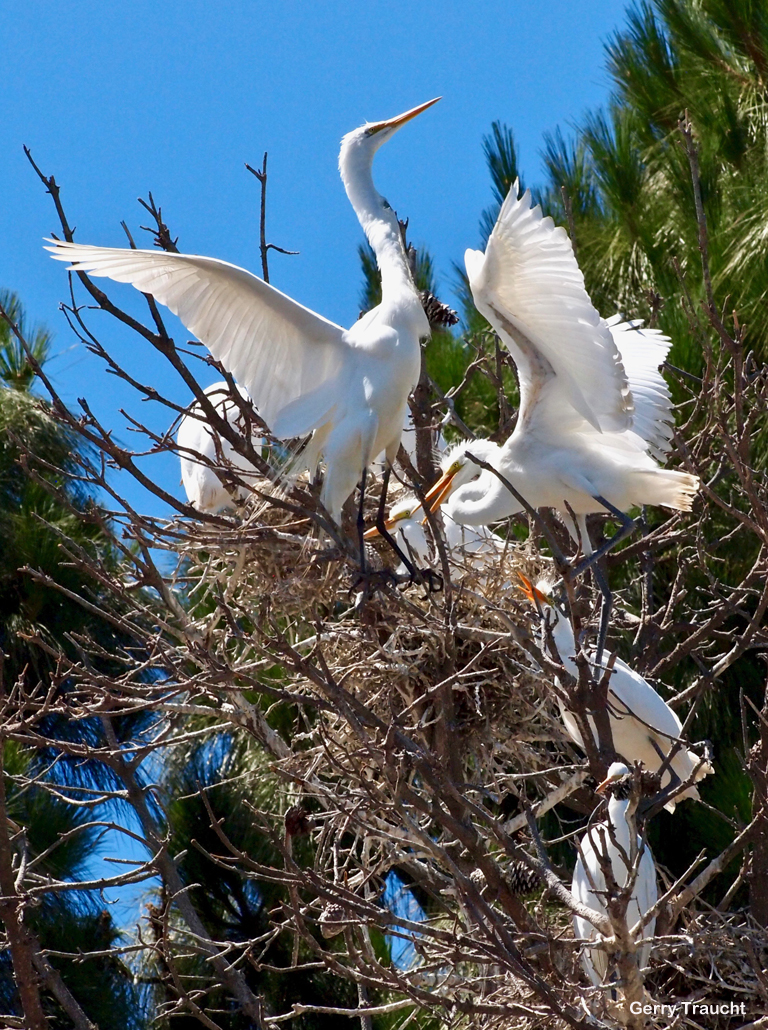SLIP-STREAM SLEEPING WHILE SWIMMING
The long camera lens catches the young chick sleeping as he paddles and bobs along under his mom’s tail feathers with another adult goose, possibly an aunt, providing a safe presence from behind. This chick was very late arriving and always travels with his parents and another adult goose in a family of four. His name is Oliver, for his eating habits, Never before has a boy asked for more.
Oliver has two cousins (briefly they were three cousins) that are two weeks older. They are inseparable from their parents. Daily they travel with Oliver’s family, making a group of 8, easy to spot.
They have predecessors, 10 chicks (that were for a few days actually 11 chicks), that were born a month earlier. They travel with four adults in a group of 14. Together the families make up a collection of parents and chicks numbering 22 that stay together for nearly two months until the 10 are grown and ready to fly with their family.
The eleven chicks arriving April 26, 2021, Berkeley Aquatic Park.
Ten chicks going for second breakfast. They frequent two fields. In a group they swim from one to the other to eat, sleep, grow, and swim back to the other field for third breakfast.
The twins are around two weeks older than Oliver. The head of the second twin can be seen eating grass behind a parent. Promising wings and torso get a stretch. An accidental flag fits the mood of this early display of the growing wings.
The families graze along a creek in a life that is often full of sunshine, water and summer green.
In the field of geese are Oliver and two of his guardians.
Oliver is at the center of his world. Mom is in front of him. The nearly grown ten fledglings and their parents surround him. Close but out of the picture are the twins. A perfect life. He appears to have no idea how small he is. He’s full of play, he’s fearless. His family watches him, quietly bailing him out of tight situations. He’s smart enough at this age to stay close to Mom, no matter what. The bonds between Oliver and his family are impressive and, for now, there is an atmosphere of every day being a nearly perfect day to be a goose.
Members of the Ten cousins, the Twins and Oliver in the shallows. Oliver standing, shaking off water.
On June 10th 24 geese swim to the shallows at the end of the lagoon for a group bath. Here is Oliver the chick under his mother’s tail feathers. His two cousins are behind him. The ten and their parents are a few feet away out of the picture. This is the first time in this spot frequented by many other bird but not the geese. It seems solely for the bath.
Oliver and cousin fresh from their bath
And the ten with their entourage fresh from their bath. Now the geese swim south to a familiar field to briefly graze. The stop seems mostly to practice going up the bank as a family to the grass and soon back down the bank and into the water for play session with stale bread.
Oliver hisses at stale bread.
Parents show him how to turn apparently petrified food into a game, pushing it, nudging it, knocking it around until it’s the twins’ turn to play with it.
In June his feathers and colors begin to change from chick to teenager. He still stays close to Mom.
On July 5, he boldly explores a new field across the walkway, discovering a berry bush. The family is farther from the water today. There is always the possibility of a dog chasing him before he can get to the water since he is too young to fly. His parents watch and seem to give permission for him to explore. In a minute he scores a berry and they return to a safe field by the water.
Wings begin to show.
As he grows, he rests more often. His plumage is filling out.
By July 19 Oliver is strolling gracefully with his Mom. His father watches, always vigilant.
His older cousins, the ten, are already testing their wings, as they approach their time of departure with their family. Oliver needs at least a month more.
The twins are around. They will start flying in a couple weeks.
Oliver has his adult feathers and personality! Responding to his name, he comes to say hello.
Often Oliver is with the mallards and white ducks.
On June 19 the white ducks appeared. They stayed huddled in the bushes for a week. Slowly they ventured out but stayed in a tight group of three. By August they roamed among the mallards and discovered they were bigger, stronger and faster. Their hesitancy was gone. They became friends with Oliver and were in a community of ducks, coots and geese. It was much the same group every day for a few hours.
Oliver’s parents start leaving him for short, then longer periods. He seems at times briefly uncertain but okay. He engages with the white ducks and mallards and the occasional goose.
In early September Oliver’s Mom disappears. His Dad had already been gone a couple days. There is no sign of the adult goose that always was with the family early on helping to protect him during his first two months. For the first time Oliver is without other geese. He continues to go to his usual places with the community of white ducks, mallards and coots, adapting to this independence.
In three days Mom and Dad are back with a mystery fledgling Oliver’s age that joins the family. This is one of the last days at the lagoon for the family. It’s September and the fledglings can fly.
September 23, 2021. This is Oliver grown and ready to go. He is friendly and is perhaps saying goodbye. The next day the geese are gone. There are large numbers of geese in Berkeley on the sports fields near the water and other grassy fields and around lakes especially Oakland’s Lake Merritt. Maybe he’s there or gone south. He and the extended family of 22 geese and their community of other birds were a joyous part of the daily walks. We’ll look for him in the spring.


























